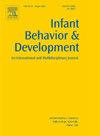母亲和胎儿暴露于现代武器的潜在有毒金属与婴儿认知、感觉运动和社会情感发展:母乳喂养的作用
IF 1.9
3区 心理学
Q3 PSYCHOLOGY, DEVELOPMENTAL
引用次数: 0
摘要
新一代武器中的有毒金属对平民的健康构成威胁,孕妇在战争中尤其脆弱。研究的重点是单一毒素,如白磷和贫铀,尽管平民暴露于多种有毒金属。研究主要集中在影响新生儿健康的有毒金属,而忽视了大婴儿的发育和突出的二元因素。本研究探讨了母亲和新生儿在战争期间产前暴露于多种致癌物质、神经毒性物质和致畸金属对婴儿感觉运动、认知和社会情感发展的影响,以及母乳喂养在其中的作用。参与者是502名巴勒斯坦母亲,在2014年加沙战争期间怀孕,以及她们的新生儿,在分娩时招募(T1),并在6个月时随访(T2;N = 392)和18个月(T3;N = 358)。在T1,对母亲和新生儿的头发样本进行了18种有毒金属的测试。在第2阶段,母亲报告了婴儿的精细运动、语言和社会情感技能,在第3阶段,心理学家测试了他们的运动、认知语言和社会情感技能。母亲报告在T2和T3进行母乳喂养。结果显示,母亲和新生儿有毒金属负荷直接影响发育的时间不同,母亲高负荷的致癌物金属与婴儿6个月时的发育问题有关,新生儿高负荷的致癌物和致畸物金属预示着18个月时的发育问题。母亲和新生儿的高有毒金属负荷与母乳喂养强度和持续时间的减少有关。母亲而非新生儿接触有毒金属的影响通过减少母乳喂养介导到婴儿发育中。本文章由计算机程序翻译,如有差异,请以英文原文为准。
Maternal and foetal exposure to potentially toxic metals of modern weaponry and infant cognitive, sensorimotor, and socioemotional development: The role of breastfeeding
Toxic metals in new-generation weapons pose health risks to civilians, and pregnant women are especially vulnerable in wars. Studies have focused on single toxins, such as white phosphorus and depleted uranium, although civilians are exposed to multiple toxic metals. Research has mainly concentrated on toxic metals impacting new-born health but has neglected older infants’ development and salient dyadic factors. This study examines how maternal and new-born prenatal exposure to multiple carcinogen, neurotoxic, and teratogen metals during a war impacts infants’ sensorimotor, cognitive, and socioemotional development, and the role of breastfeeding in that association. The participants were 502 Palestinian mothers, pregnant during the 2014 War on Gaza, and their new-borns, recruited at childbirth (T1) and followed up at 6 months (T2; N = 392) and 18 months (T3; N = 358). At T1, maternal and new-born hair samples were tested for 18 toxic metals. At T2, mothers reported infants’ fine-gross-motor, language, and socioemotional skills, and at T3, psychologists tested their motor, cognitive-language, and socioemotional skills. Mothers reported breastfeeding practices at T2 and T3. Results showed that the timing of direct developmental impact of maternal and new-born loads of toxic metals differed, as mothers’ high loads of carcinogen metals was associated with infant developmental problems at 6 months, and new-borns’ high loads of carcinogen and teratogen metals predicted developmental problems at 18 months. Both maternal and new-born high toxic metal loads were associated with decreased breastfeeding intensity and duration. The impact of maternal, but not newborn’s, exposure to toxic metals was mediated into infant development through decreased breastfeeding.
求助全文
通过发布文献求助,成功后即可免费获取论文全文。
去求助
来源期刊

Infant Behavior & Development
PSYCHOLOGY, DEVELOPMENTAL-
CiteScore
4.10
自引率
4.80%
发文量
94
期刊介绍:
Infant Behavior & Development publishes empirical (fundamental and clinical), theoretical, methodological and review papers. Brief reports dealing with behavioral development during infancy (up to 3 years) will also be considered. Papers of an inter- and multidisciplinary nature, for example neuroscience, non-linear dynamics and modelling approaches, are particularly encouraged. Areas covered by the journal include cognitive development, emotional development, perception, perception-action coupling, motor development and socialisation.
 求助内容:
求助内容: 应助结果提醒方式:
应助结果提醒方式:


